#Think the Straits of Malacca
Explore tagged Tumblr posts
Text
Of all the very hard worldbuilding posts I foresee myself writing, the one labelled 'Influence Of Warp Travel On Maritime Shipping And Chokepoints' has got to be in the top 10%.
#Lotta articles tbh#In this cas what I mean is that although maritime chokepoints#Think the Straits of Malacca#Gibraltar Hormuz the Suez and Panama Canals etc#Have historically been *really important* parts of world geopolitical history#And so I'd like to at least allude to them in the 12 Worlds#But of course the presence of the Warp allows *all* of these to be bypassed#Now I'm mostly comfortable with how this applies to naval fleets and their movements#But giving some economical significance to them for merchants and the like#feels desirable#I have some plans to achieve that at least#Which mostly involve jacking up the price of Warp travel#Both to avoid the 'bypass' issue and the 'Warp Travel is so fast no one uses the actual ocean' issue
2 notes
·
View notes
Text
when it comes to slaughter, you will do your work on water
SNP Westerhout is a thousand feet long, steely grey with a red belly. She’s been at this for almost twenty years by the time you join her skeleton crew.
One of the young seamen, Buchanan, doesn’t like you much. From the time you joined the crew he’s doubted your age out loud in front of everybody. He says shit like, “You don’t look nineteen. Do you think he looks nineteen, Cillian? He can’t be.”
You turn seventeen in a few days, but that’s besides the point. It’s right there on your fake ID: nineteen.
You’re a real pussy about it, too; prideless, cowardly, invisible. But not to Buchanan; to him you must be some threat.
You are, in the end. At his end.
🤠 PRETZELS AND VIOLENCE BELOW THE CUT 🤠
He does nothing without an audience. Passing by each other in an otherwise empty corridor, he says nothing. Won’t even look up off the floor in front of him. But when the other guys are milling around, he’s full of condescension, full of doubt about you, full of theories. You think you don’t give him anything to work with, but sometimes it feels like your shame is a long strip of magnetic reel he’s unspooling in front of everybody. The things he says, stupid as they are, cut you open and dissect you so everyone can lean over and see what’s stowed inside your skeleton.
You don’t like it, but you’re not gonna do anything about it.
The more you demure, the ballsier Buchanan gets. He starts trying to pick fights, albeit only when there’s somebody to see it. He’s a little bit shorter than you are, but bigger. (Everybody was bigger than you back then, when you were a kid pretending to be a man pretending to be human.) When he pushes, you stagger. When he shoves the heels of his hands against yours, he can push you down onto your knees, then he kicks you in the ribs. It happens about that way a couple times. It knocks the breath out of you and you can’t get back on your feet right away, so the sight of you on your hands and knees sucking for air is a nice spectacle — but it doesn’t hurt, really. Not for long. The seamen and the oilers get tired of watching you long before you’re on your feet again. It’s funny for them, but not impressive. Some of the older guys think he could stand to pick on somebody who stands a chance for a change.
You do start to wonder if you ought to take offense. You catch sight of the bruises he leaves and wonder if they shouldn’t go deeper than they do. If your pride shouldn’t feel bruised and soft like overripe fruit. It doesn’t, though — it feels more like watching some character you don’t care much about get the shit kicked out of him on TV.
Westerhout is headed for the Strait of Malacca when you finally talk to him. Everyone’s nervous because some smaller vessel got hijacked a couple weeks back. One of the pirates had a grenade-launcher, Cillian tells everyone at lunch-time. You listen, but only because you like the look of him. (This is something you grapple with from time to time, but mostly you accept it. It’s far from the worst thing about you.) If pirates want to try and steal forty-foot containers loaded with mysterious contents, they could just kick you about it, too. They can blow you up — what choice does anybody have?
But Buchanan is real nervous about it. He doesn’t say anything at lunch; just wears this chary look on his face. Part of you wants to feel smug about that, but looking at him just makes you blue. He can’t sleep that night. It’s strange that you even notice — but you’re fresh off your shift, and the sky is a cold, cold shade of grey. It blazes silvery behind the ovular windows leading from your room, which you share with a guy called Lopez, to the snack machines. They’re bubbly with condensation, and the bright primary shades of the containers out on the deck blur like a surreal, preschool dream.
You pause and look out over the deck from the doors to the emergency escape. Your hand clears water from the glass and you squint at the dark shape leaned over the deck rail. The stacked containers look like a city built around him, like Buchanan’s standing at the edge of the world.
Spotlights on the deck light the way to him. You’re forgoing a bag of out-of-date pretzels for this, and don’t quite know why. By the time you see him through a narrow frame of corrugated steel boxes stacked forty feet high on either side, you’re sure what you want to do. (It was iffy, at first, because your mind kept snapping to the little utility knife in your back pocket on your way here. Must’ve been self-preservation, though, because Buchanan’s kicked you so many times.) When you reach him he doesn’t turn around, so you lay your hand briefly on his shoulder then lean over the rail next to him and you both watch foam lap out of the black ocean.
Buchanan mutters something like an apology, which you don’t answer. The follow-up is excuses: he guesses he’s a little bit homesick. He was in the foster system for most of his childhood; his adopted father recently passed away. Can you be homesick, he wonders, if you never had a home?
You’re barely listening, but you understand doubt and confusion and lonesomeness so intimately it comes as a shock that anyone else could be acquainted with them without you hearing about it. It shouldn’t surprise you, though, because these things don’t talk. (That’s kind of the hell of it, isn’t it?)
You look over at him, finally, and he looks at you like it’s the first time he’s ever seen you. Like he didn’t know who it was he was talking to all this time, or knocking down, and you realize he’s not the age he says he is, either. He looks heartbroken for a beat and his mouth works around a “Why,” but it’s eaten up by waves rushing against Westerhout’s belly and he abandons whatever it is he’s gonna say. Reaches out instead and holds onto to the back of your neck while he looks in your eyes like he’s sorry, then all of a sudden he’s coming closer and closer and you can’t begin to imagine what it is he’ll do
and you never find out, because you slip the knife from your pocket and spring it and jam it down to the hilt between his ribs.
He clenches up and grabs at your skinny wrist. His eyes drop down and his mouth moves — probably another one of those why questions but only blood comes out — and you don’t know, exactly, but you think to him, you know why. It occurs to you to yank your knife out of him and drive it in a dozen more times, but it also occurs that his blood would paint an abstract expressionist work of evidence against you, so you shove him at the railing instead. He’s heavy and you can’t seem to lift him over. The light’s leaving his eyes the whole time and his body starts to list and sag. He drapes his spine over the metal and you grab his pants and haul him the rest of the way, then let go. Your knife slips out of your grip and falls with him. He hits the water and you imagine he bobs back to the surface in the dark gloom, but the knife sinks.
You step back and look at the rail. It’s clean. There’s a glob of blood on the deck, which you wash away with a styrofoam cup and sludgy rainwater you dug out of one of the garbage cans fixed to the outer deck. You do the same with the blood crusted at the corner of your thumb nail, then buy your pretzels and take a long shower and you’re in bed eating when Lopez comes into the room.
It’s a few hours before they start looking for Buchanan. You can’t sleep, but pretend to wake up, then help look for him at one in the morning. Knowing you won’t find him doesn’t diminish your effort. It takes thirteen men a long time to scour a ship that size. Hours after you dropped him over the railing, they call in a search and rescue.
This "chapter" needs more editing than others, and may or may not ever make it to the official chronicle of yote lore. Posting it anyway! 💃 Taggin': @fortunatetragedy @saturnine-saturneight @cowboybrunch
#writeblr#writing excerpt#writing community#writing share#wip excerpt#writers on tumblr#writerscommunity#original writing#davywrites#coyotebackstabby
30 notes
·
View notes
Text
in this world there are thousands of thousands of shipping lanes for boats to go through, looking at a map is crazy about it
however
there are about 5 points in this world where if the people who control it says No you cant go here, then you might just be fucked
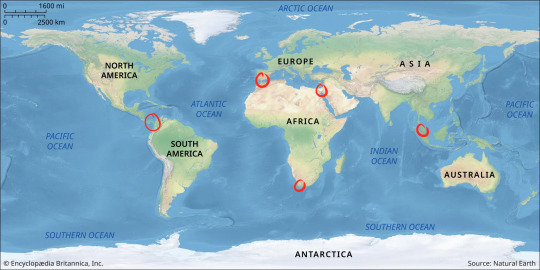
panama canal
strait of gibraltar
suez canal
cape of good hope
AND
malacca strait

(via canadian geographic)
this is from an interactive map that shows the ships travel during the year of 2012 but its not limited to this year
now!
we all know that the yemeni houthis are shooting at israel owned or israel bound ships passing through the red sea
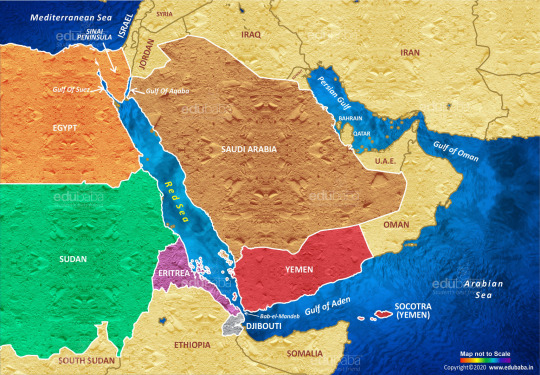
yemen has, by doing this, cut the suez canal out of the equation for a Lot of ships owned by zionists, not just hindering trade at the southern port on the red sea by forcing inbound ships to go all the way around the cape of good hope and into the med to get zionists trade goods
NOW!
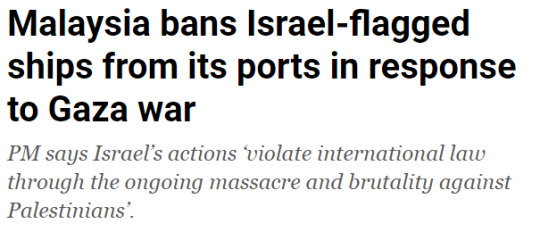
(via al jazeera)
this deserves to be talked about because youll never guess where malaysia is
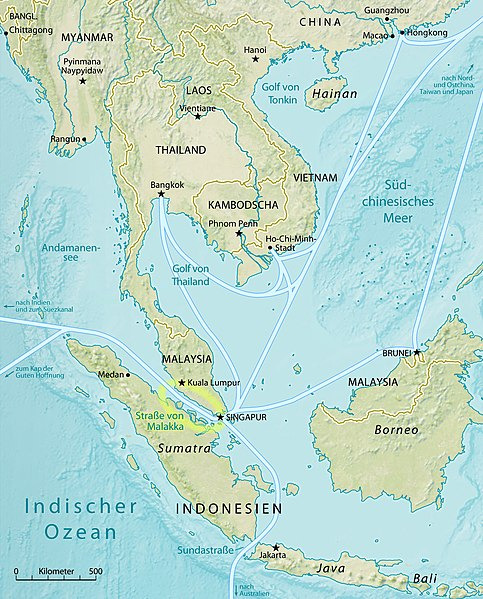
the strait of malacca is i think historically the most used path between the indian ocean and east asia, and malaysia is one entire half of it and owns port klang which is one of the worlds busiest ports and on the top 3 at LEAST in the region (source i saw said 12th busiest in the world and second in south east asia after singapore but im no expert)
malaysia doesnt NEED to shoot at ships because banning israel from its ports is devastating on its own, like if the entire strait were to be closed off (if indonesia and malaysia got together and not only banned them from ports but also their water space) then no boats can go from israel to or from china. with the suez canal you can go the long way round the cape of good hope but there are really limited option if youre locked out of malacca strait
malaysia doing this is good and cool because even if its not effective at halting trade at all its still a gesture and a half
its like gibraltar going No :) about letting you out of the mediterranean
#palestine#geopolitics#tel aviv#jerusalem#okay im not at all an expert on this but malacca is my favourite waterway on earth#get out of my way gay boy i say and push over panama canal to go lust for the strait of malacca carnally#i may be entirely wrong on everything but the importance of the strait itself and yknow what im willing to live with that burden#im a fan of the strait first and a person second#but yeah no im not a boat person just a malacca fan
65 notes
·
View notes
Text
Notes on Anitismo - The Ancient Religion of the Philippines by Isabelo de los Reyes.
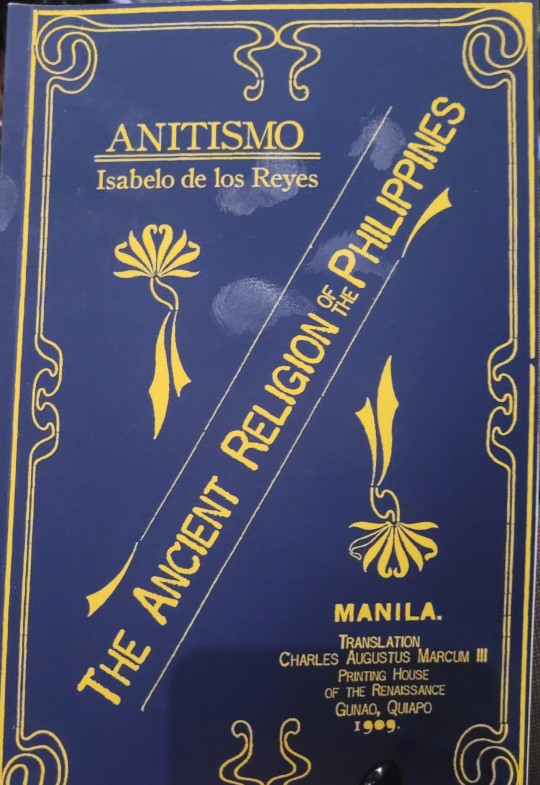
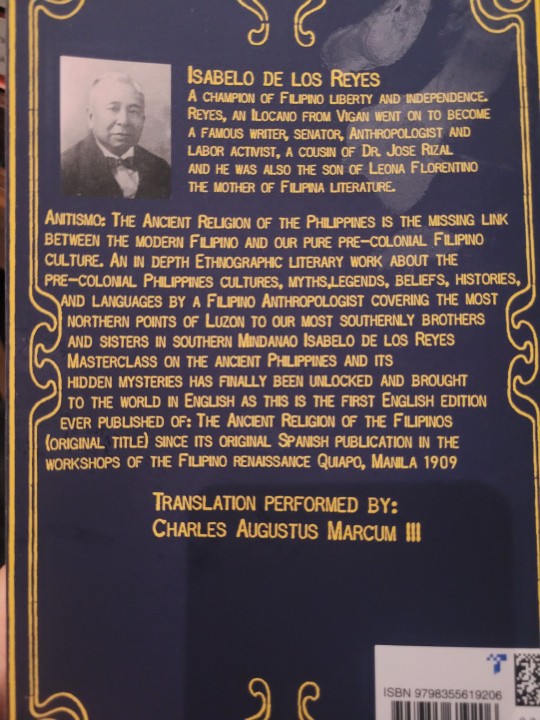
Keep in mind - this was written a while back.
Ancient Chronicles written by the Jesuit hispanic Friars state that at the that the first spaniards set foot in the Philippines from the coast of visayas to Manila there was a considerable population of Muslim converts
This was especially true for Mindanao due to conversion by Islamic teachers from Borneo
De los Reyes argues that because of this, to find native Filipino religion at its purest, we must look to the North
Distinguishing native religion without outside influence such as from Islam, Hinduism, Christianity etc can be tricky
However he argues that the traces of Native Filipino religion can be found in the stories superstitions and advice that belong to various Filipino ethnic groups (Tagalogs, Bicolanos, Zambalenos etc)
From the South of the country in Mindanao to the extreme North like Luzon, De los Reyes argues then native Filipino religion was consistent
This religion was Anitism or the Cult of Anito, meaning souls of the ancestors.
Anitism is not a monolithic religion and hosts a broad pantheon ranging from Gods to animals, nature, elements and space.
The Philippines had its own modern spiritism and De los Reyes argues this may have been the origins of the cults of "Romanist Saints" (Catholic saints) in the Philippines. By this I think he means that Filipino spirituality influenced how Filipinos proceeded with Catholic worship.
The oldest chronicles about the Philippines can be found in various museums and libraries (such as the National Library of Madrid, Covenant of St Augustine in Manila)
We can follow these chronicles, from when the Jesuit Pedro Quirino provided news of religion in the Philippines in 1604, followed by reproductions by others like the Jesuit Colin in 1663 and others such as Fr. Morga, Gonzalez de Mendoza, Aduarte etc.
Fr Morga said that Filipinos practised Anitism in certain regions like Camarines and Cagayan.
Some traditions would say that Manila and its regions were not originally native to the island - they were from Malayan islands and other remote areas.
Before the Spaniards arrived, Islamic teachers from Borneo came to preach and interacted with the locals
Their teachings and beliefs spread quickly throughout the Philippines
Fr. Grijalva writes that they (Filipinos) started adopting their traditions and took on their names.
De Los Reyes argues that Spanish conquistadors' arrival/conquest was delayed because Filipinos were already familiar with various religions and beliefs and also because of the hands of Datu Lapu Lapu. What I believe he is arguing is that Datu Lapu Lapu and the previous exposure Filipinos had to different religions at first delayed Spanish influence from spreading so quickly.
Other islanders who weren't under the control of the government in the Philippines has their beliefs influenced by religious preachers who travelled to them from the Straits of Malacca and the Red Sea.
An account, dated April 20th 1572 (preserved in the archives of India) which is from the conquest of Luzon details "In these towns, closest to the sea, they do not eat any pork, which the moors taught them. But if you ask them, they say they do not know Muhammed or his law." This account was reproduced by Wenceslao Retana.
In actuality, very few Filipinos could understand/read the teachings of the Koran despite the Islamic influence.
In Filipino traditions, reverence and worship was given to nature and the elements, and this was usually consistent throughout the islands.
Native Filipino religion beliefs include elements, animals, stars and ancestors.
Filipino religion in Manila and nearby areas was a mixture or Anitism, Buddhism, Hinduism and Islam brought by the Malays of Borneo.
Vocabulary included Sanskrit and Malay terms such as Bathala, meaning Lord.
However these terms are not used in Northern provinces.
De Los Reyes argues that Itnegs and other mountain tribes conserved and maintained the purest form of Filipino religion
In the Ilocos, Cagayan, Isabela and other provinces of Northern Luzon, native Filipino religion was more prevalent
Hindus and Buddhists converted many in Java and Malaysia.
However Muslim influence became dominant in 1478 - 60 years before the Dutch invasion.
According to Javanese legends, Hindus arrives in Java 78 years before Christ.
The first Malays came from the Minangkabau river region to establish cities in Malacca , Ojohor and Singapore in the 12th century, as per Malacca records.
In the 13th, 14th and 15th centuries, there were various Malaysian emigrations reaching the Philippines
De Los Reyes argues that Filipinos may have also populated the islands of Malaysia, and emigrations could have originated from strong winds coming down from the North.
The first Spaniards found the son of Lakandula, King of Manila, when they went to Borneo.
The emperor's master of ceremonies from Japan (Mr Fujita) argued that emigration likely came from the north and that Filipinos may have some relations to the Japanese.
According to Geographers and Historians of the Mariana Islands, what De Los Reyes calls the "know it all Spanish" - had no idea about interesting ruins found in Oceania, one of which was a prehistoric statue that was being held in the British museum.
He argues there may be hidden megaliths, artefacts, and remnants of lost civilisation in the Philippines, as seen in various locations such as : Butacan caves, Pangibalon Hill, Madias de Iloilo and Nasso.
#Philippines#pre colonial philippines#Filipino#Filipino history#Anitism#Filipino religion#Pinoy#Isabelo de los Reyes#History#Asia#Asian history#South east Asian history#Religion#ancient religion#South east asia#Colonialism#spanish colonial#Spanish colonialism#Philippines history#Philippine history#Anitismo#Keep in mind this was written a while ago so some terms may be outdated#I've tried to interpret some tricky parts the best I could#My ass who is from the Northern Philippines 🗿
66 notes
·
View notes
Text

Napoleonic War Battle of Pulo Aura, 11 February, 1804, by Robert Dodd, c. 1804
The British Honourable East India Company's China Fleet of merchant vessels left Canton in early 1804 commanded by Commodore Nathaniel Dance. On 11 February, the fleet, consisting of only sixteen Indiamen and eleven smaller ships, met a French squadron commanded by Admiral Linois off Pulo Aura in the Straits of Malacca.
Undefended by delayed Royal Naval Ships of the Line, Dance adopted a bold attitude and a complex ruse to make the French think several of his ships were actually Ships of the Line. After less than an hour of battle the French admiral concluded that he was facing an overwhelming force and withdrew, allowing the British convoy to escape safely.
44 notes
·
View notes
Text
Kinda wished the new Assassin’s Creed would be in Ancient Rome or even Ancient India with the Maharajas. You know, I think Southeast Asia would be interesting, maybe that Majapahit Empire or something or the straits of Malacca.
No offence but Japan seems boring, unless it’s the Meiji Era. It’s giving me Odessey vibes, I just have no interest in it. Guess I’ll skip this one.
I hope they’d make a modern day one with Desmond miles revival or maybe Bassim. I wanna scale cities and skyscrapers!
Also, the whole system Ubisoft has now sucks. Not paying for that too.
3 notes
·
View notes
Text
Mori girl 30 day challenge

Day three
Have you ever lived in a rural environment? If so, do you think it influenced your mori-ness? If not, do you think living in a suburban or urban environment influenced your style in any way?
Maybe? If you count being born on an island…. >_<
Well I was born on a tiny island near the Malacca straits and moved on and off to the mainland every few years. Currently I live on the largest island in South Korea which is waaay more easier for me to wear mori since I can easily find the resources, I would say I’m more influenced by online fashion rather than natural or man made environments. Plus people in town seem to don’t mind whenever I’m out in a full mori fashion, because usually my mood and rarely sometimes the weather can determine the outfit I’m wearing and I feel like the best version of myself (๑>◡<๑)
So I’d say neither rural nor urban environments actually influence my mori-ness because I’m quite visually picky when it comes to fashion inspiration particularly when I browse online, books or magazines and sometimes lovely looking grannies (´▽`ʃƪ)♡

3 notes
·
View notes
Photo
A good point made in the tags:

From Wikipedia:

Singapore wasn't a nation until recently. Before that, the island was a major constituent of various kingdoms/empires in that region with different borders.
The British also treated Penang, Malacca and Singapore as one group of Strait Settlements — so I'm more inclined to think that Malacca Strait and Singapore Strait were considered as one in the past.
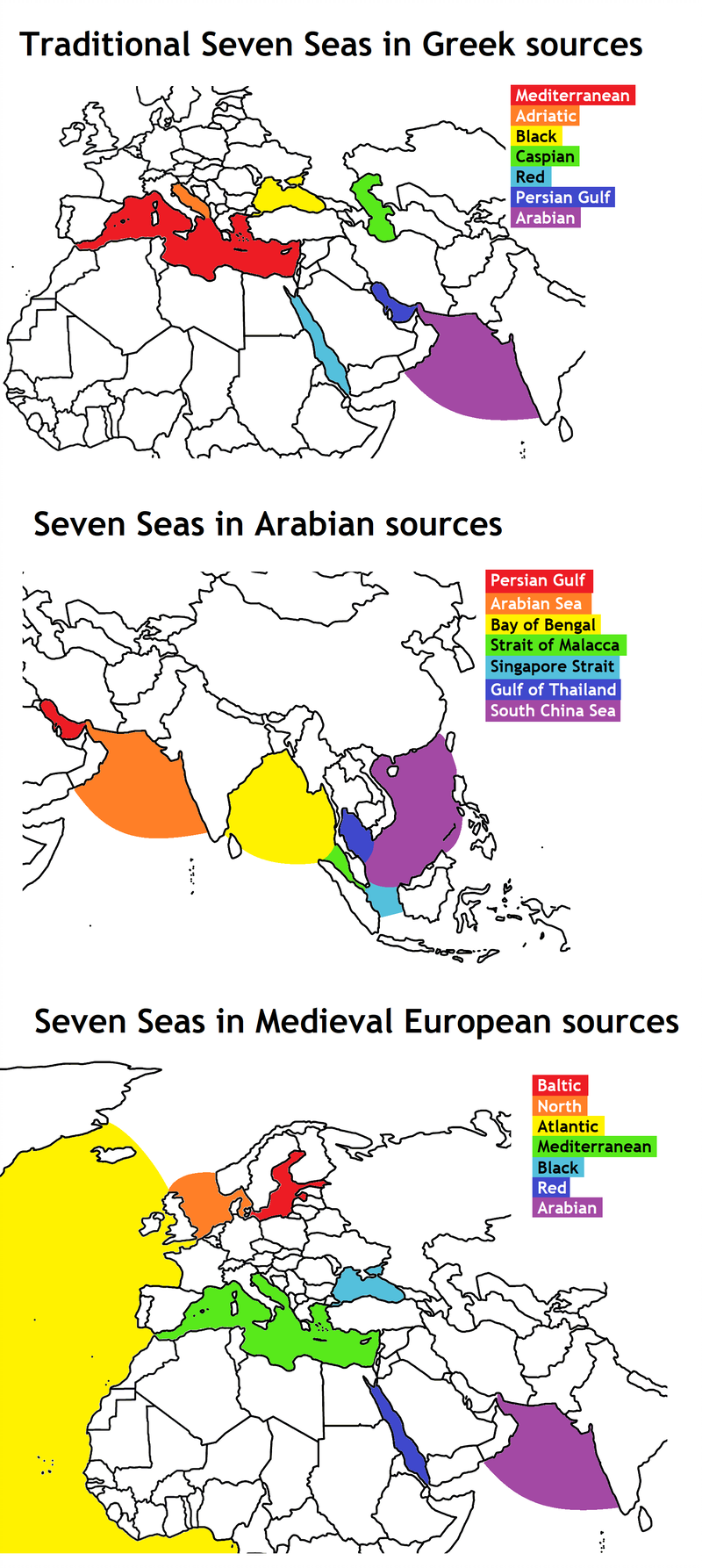
References to “the Seven Seas” are found throughout history, but the exact list varies by time and culture. Here are three of the most popular lists
67K notes
·
View notes
Video
youtube
How China’s New Silk Road is Reshaping the World
Discover how China's Belt and Road initiative is reshaping the world economy. From infrastructure projects to trade agreements, find out how China's new Silk Road is impacting global markets. Imagine a world where trade flows seamlessly across borders, where goods and services travel faster and cheaper than ever before. That's the promise of China's New Silk Road initiative, especially the corridor connecting Kunming in China to Mandalay in Myanmar and Dhaka in Bangladesh. This corridor isn't just about connecting cities; it's about reshaping economies and forging new alliances. Think about it: reduced transportation costs mean businesses can thrive, and consumers can enjoy lower prices. For countries like Myanmar and Bangladesh, this could spark a wave of economic growth, lifting communities and creating jobs. And let's not forget the strategic angle-access to the Indian Ocean through ports like Chittagong gives China a vital alternative to the congested Malacca Strait, a move that could redefine regional power dynamics. But it's not all smooth sailing. India is watching closely and may view this corridor as a challenge to its influence in South Asia. Tensions could rise as India might feel compelled to push back with its own initiatives. Then there's the situation in Myanmar. With ongoing political strife and ethnic conflicts, the stability needed for such a massive project is anything but guaranteed. China's ambitious plans hinge on Myanmar addressing its internal issues, which is no small feat. And let's talk infrastructure. Myanmar has a long way to go in terms of roads, railways, and ports. China will need to invest heavily to make this corridor a reality. Plus, large-scale projects often come with environmental and social repercussions. Displacement and degradation can stir local resistance, complicating progress even further. So, while the potential benefits are enormous, the road ahead is fraught with challenges. China must tread carefully to ensure this corridor doesn't just become a blueprint for ambition, but a reality that works for everyone involved.
0 notes
Text
Top Tips for First-Time Cruisers for Singapore to Malaysia Cruise Adventure
A number of Indian families choose Singapore and Malaysia as their first international destinations for a good number of reasons. If not for anything else, cruising through the mighty Andaman Sea and the Grand Strait of Malacca is an experience on its own. Throughout the cruises, you can experience the breathtaking coastline views, picturesque islands, and the warm hospitality of the locals. This is something you do not get to experience everywhere. Also, many of these cruises briefly stop at different ports. This is where the boarders can sample local foods, immerse in native cultures, and interest in the residents. So when thinking about a holiday with a difference, then the Singapore to Malaysia cruise is likely to be the right fit.
Singapore-Malay for Cruises
As one of the best-connected destinations with direct flights operating from multiple cities and different airlines, both Singapore and Malaysia make for excellent cruising and land holiday venues. Even if you don't have much time for a long holiday, then you can simply book your tickets to cruise. Indian companies like Cruisbay help you book cabins in the best rated ships like the Genting Dream, among others.
Making the Most of Your Trip
Here are the basics to make the most of your trip:
Book Cabins after consideration: Think about your preferences and needs while choosing a cabin. The interior cabins can be cheaper. However, they do not have any windows. Again, ocean view cabins are relatively expensive, but they have portholes for windows. Balcony cabins are spacious, while private balconies offer maximum privacy and the best views.
Pack your things right: For the Singapore to Malaysia cruise, it is essential that you pack light and comfortable clothes while traveling to the ports of call. Considering the warm weather that dominates Singapore and Malaysia, it is essential to bring your sunglasses, sunscreen, swimwear, and a hat. However, for the evening, it is a good idea to pack some formal wear. This is because many cruise liners maintain a formal dress code in the evening. Pack your usual medicines, as well as extra medicines for emergencies like sea sickness.
Ports of call matters- Different cruise liners offer different destinations. So before you book your cabins, it is important to check the destinations and research the places you will be visiting. While most of the cruise liners offer a comprehensive service, you can also choose to explore the new places independently. Make sure to check with your tour planner about the deals and services that they have to offer.
It is not only the cruise and land travel that matter while traveling- Even your ship would have a lot of things to explore. So why not spend some time studying the ship's layout right on the day you embark? Locate the dining space, the theater, the pools, the spa and everything that catches your interest.
Set a budget: Certain facilities in the cruise might come complimentarily. However, you may need to pay for additional services like shore excursions, drinks, specialty restaurants, and spa treatments.
Don't forget to Enjoy
Cruises can be a beautiful way to unwind and reconnect with your family. And a little bit of preparation on your part can make memories even more rewarding.
0 notes
Text
The Straits of Malacca and Moving On
I recently took a trip to see my dear friend Nurul in Kualar Lumpur, Malaysia, where she's been living for the past few years. She's a working girlie now and I had been on my two month world tour to see old friends and family. This was our state of mind when we met up and went on a long weekend trip to Penang, hoping to get some answers to our heart's most fervent burning questions.
I booked us a spacious Airbnb duplex with floor to ceiling windows that faced the coast, so we woke up to sunrise illuminating the vast expanse of the sea and distant shipping vessels every morning. And across the street stands a grand mosque that glimmers Gatsby green under moonlight. This is where we got answers to our questions.
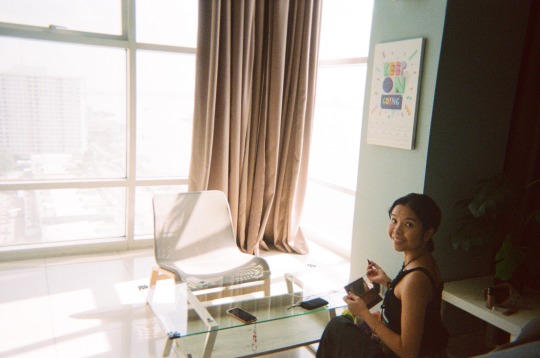
Nurul getting ready in the Penang airbnb
Before coming to Malaysia I had travelled through the Cambodian cities of Phnom Penh (my home city) and Siem Reap. My time in Phnom Penh were full of painful reminders of how my relationship with my family still needs to grow now that I've grown into my own personhood. But my time in Siem Reap opened my eyes to the possibility of choosing a simple life of love and community.
After a whole evening of heartfelt discussions and revelations, I realized that I needed to move back to Cambodia. My homesickness bubbled up to the surface and so did my distaste for the state of Australia.
Nurul and I were riding on that wavelength of being sick and tired of second-guessing ourselves and letting other's perceptions of us colour our own lived experience of the world. That night we shed all that dead weight off and basked in the sheen of our new skin. Together we glowed pink and purple.
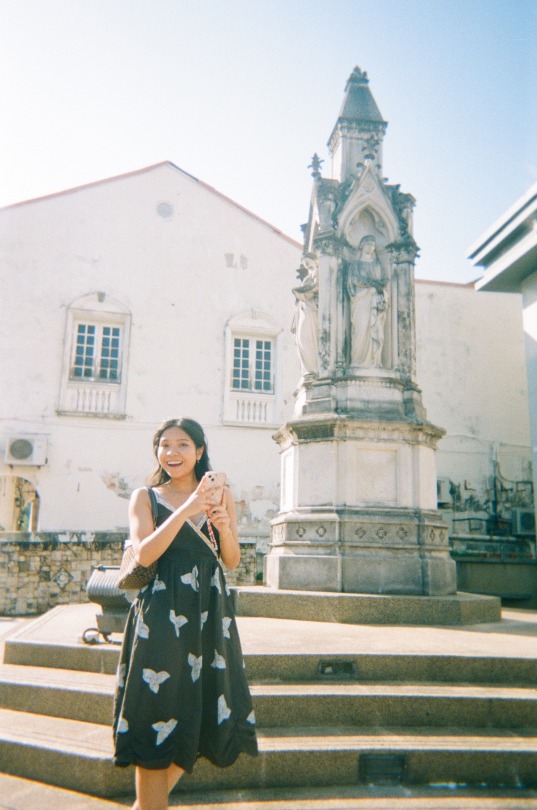
excursions around Penang
So what now?
I'm heading back to Cambodia, but this time I'll be living in Siem Reap. I can't wait to join my weird friends there! It's also a good place to lay low for a while and save some money towards future projects. I was also previously hum-hawing about going back to uni for a politics course, but nah not anymore. I have picked up digital drawing and painting! It's coming together slowly, I'm a great beginner at this and I think a lot of progress can happen in one year! Most importantly, I just feel giddy to get back into the arts scene in Cambodia. I've really missed home.
Thoughts about Melbourne, Australia?
It's alright but it's not for me...
I find it hard to relate to the narratives and ethos here. The people I do relate to are often other immigrants, especially South Asians. I think being an immigrant here takes a certain level of grind-set that I just can't muster up because I don't even see a future for myself in this country. I'll make a separate post about my experiences in Australia because it's a lot to get into.
But my final thoughts are: It was alright, the people are generally nice, but I'm ready to move on and I don't think I'll look back!
I'm ready to go home.
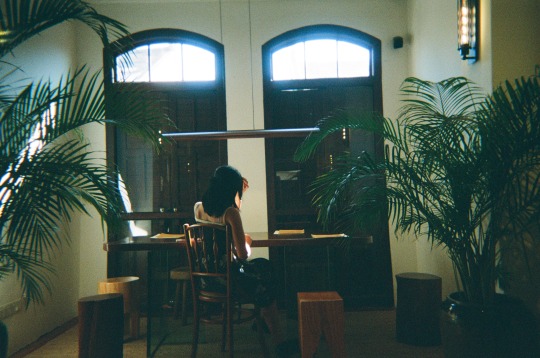
taken in a coffeeshop in Penang
0 notes
Text
Learn Sailing in Singapore: A Comprehensive Guide to Navigating the Seas

Introduction
Sailing is a captivating adventure that allows you to connect with the sea, embrace the wind, and experience the beauty of the open water. While many people think of exotic destinations when it comes to sailing, you might be surprised to learn that you can embark on your sailing journey right in the heart of Singapore. In this article, we will explore the exciting world of learning to sail in Singapore and provide you with the knowledge and resources you need to get started on this thrilling endeavor.
Why Sailing in Singapore?
Singapore, often recognized for its bustling city life and thriving economy, boasts a vibrant sailing scene that attracts locals and tourists. The city's strategic location along the Strait of Malacca makes it an ideal place for sailors to enjoy a variety of experiences, from leisurely cruises to competitive racing.
Getting Started
Sailing Schools in Singapore
The first step in your sailing journey is finding a reputable sailing school. Hitech Sailing School, widely recognized as a top choice for aspiring sailors in Singapore, offers a variety of courses catering to different skill levels. Their experienced instructors and well-equipped facilities provide a fantastic environment for learning.
Courses and Certification
Sailing courses typically include a mix of theory and practical lessons. Beginners can start with introductory courses where they learn the fundamentals of sailing, while more experienced sailors can pursue advanced certifications. The Royal Yachting Association (RYA) and International Sailing School Association (ISSA) are globally recognized organizations that offer certifications, ensuring you receive quality training.
Practical Experience
Sailing is all about hands-on experience. Once you've grasped the basics, it's time to head out onto the water. Most sailing schools in Singapore provide opportunities for students to apply their knowledge on various types of boats, from dinghies to keelboats.
Sailing Destinations in Singapore
Sentosa Island
Sentosa Island is a popular destination for sailors in Singapore. Its pristine beaches, calm waters, and lively marina make it an ideal place for beginners and experienced sailors alike. The picturesque backdrop of Sentosa provides an enjoyable and scenic sailing experience.
Changi Sailing Club
Changi Sailing Club, located on the eastern coast of Singapore, is another excellent spot for sailors. The club offers breathtaking views of the sea, a friendly community, and various facilities and services for sailors of all levels.
The Thrill of Sailing
Sailing in Singapore is not just about learning a new skill; it's about embracing a lifestyle that allows you to explore the beauty of the sea, engage with nature, and experience the excitement of the wind in your sails. As you gain experience, you can participate in races, explore the nearby islands, and even consider joining a sailing club to connect with like-minded individuals.
Safety and Regulations
Safety is paramount when sailing, and Singapore has stringent regulations to ensure all sailors' well-being. You should know the local rules and guidelines, including navigation, equipment, and weather conditions. Familiarize yourself with these rules and always follow best practices for a safe and enjoyable sailing experience.
Conclusion
Learning to sail in Singapore is an incredible journey that opens up a world of adventure and relaxation. The city's unique blend of urban life and maritime beauty offers a beautiful backdrop for aspiring sailors. Whether you're looking to sail for leisure or aspire to become a seasoned sailor, Singapore provides the perfect platform to embark on this thrilling endeavor. Safety, education, and practice are vital to mastering the art of sailing and making the most of this unique experience. So, hoist your sails and set out on the waters of Singapore, where your sailing adventure awaits!
0 notes
Text
I think there's a very minute chance of it's authenticity if you bear with me.
2nd century would be Rome at it's maximal extent and I think people don't give enough credit to the amount of osmosis that existed between the Near and Far East at this time.
I know there is the notion of the Silk Road allowing Rome and China to have had chance interactions and trade by proxy or even directly during this period.
Another route that I think deserves it's credit is the (Red Sea->Gulf of Aden->Arabian Sea) the Ptolemies made investments into the peninsular port of Berenice Troglodytica in their time (both for gemstone mining and far flung trade imports) to reach out into this area.
After Egypt was subsumed by Octavian and the Roman Empire was established they continued investments and use, even later elevating Berenice to having it's own prefect signifying it's import/scale of development to them.
You also have the Arab nomads and traders (Sabaeans/Himyar/Hadramaut) and the mirrored East African kingdoms/city states (Aksum/Opone/Mosylon) all making forays into the Greco influenced former satraps of Alexander along the Iranian and Indian coasts and even to Sri Lanka.
I don't have personal study or evidence of Austronesian trade at this time, but I imagine even well before the Majapahit Empires time the Strait of Malacca and the greater Indonesian Archipelago were a hotbed of maritime trade.
Chain this together with the Polynesian expansion who (it is debated) may have reached the Galápagos Islands and Juan Fernández Islands or in a reverse linking may have had some trade links with Chumash expeditions off of the Californian coast and a very tangential avenue for linkage between the Old and New World exists.
Maybe a living Macaw or two exported or some minor depiction of one? Could have arrived in Japan/Korea/China and made it's way along the land route or through the great chain of maritime trade I elaborated? All very speculative, but recent archaeological finds are hinting at a much more inter-connected Old World.
Much more likely to be a fraud as suspicion implies, but reality is bizarre, granular, and coincidental and I get too much fun out of speculating on crazy little niches in history.
(https://pcma.uw.edu.pl/en/2019/04/17/berenike-2/) - Berenike Project excavating the site where they've found oils, spices, and other materials from India including a statue of a Buddha
(https://web.archive.org/web/20170204143633/http://legacy.fordham.edu/Halsall/ancient/periplus.asp) - The Periplus of the Erythraean Sea, translation of a travelogue by a trader in these areas in the 1st century
(https://heritageofjapan.wordpress.com/2016/10/01/how-did-3rd-4th-c-roman-coins-end-up-in-the-12th15th-c-katsuren-castle-on-okinawa/) - Of course the Roman coins found back in 2016 that made waves of speculation. Although as has been acknowledged they could have been floating around in coffers from anywhere, or most likely the Ottomans who made great use of the same area for trade and then some.
uhmmm losing my mind a bit, why is there a macaw (new world parrot!) depicted on a supposed roman (2nd century) mosaic sold through christie's in 2003? Am I blind? Are there in fact old world parrots that look more like macaws than I am aware of? No, right? Did I spot a decades old antiques fraud through just...looking for depictions of birds in the ancient world? I don't think the Romans had macaws and that very much looks like a macaw...

"A ROMAN MARBLE MOSAIC PANEL Circa 2nd Century A.D. Composed of minute tesserae in multiple shades of red, green, black, gray and tan on a cream ground, the rectangular panel centered by an elegant water-filled krater with a trumpet-shaped foot, wide flaring mouth and vertical voluted handles, a parrot and a greenfinch perched on either side of the rim, the greenfinch dipping to take a drink, its tail uplifted, a chaffinch on the upper left pecking at a floral, a large partridge below, its wing unfolded, facing right and pecking at foliage, and a pileated woodpecker bottom right, facing left, with additional foliage in the field."
#history#culture#Rome#Ptolemies#I'm way too invested in the Classical Period#Could spend time doing nothing but reading about it honestly#Also just a mark for Ptolemaic Egypt#Cosmopolitan paradise on the Nile that it was#It's a fake fake faakkkeee
143 notes
·
View notes
Note
Going by your post about whale ships and pirates did pirates often target whale ships?
Not particularly, as the golden age of piracy was on its way out the door when whaling really began in earnest, and was almost fully squashed but for a few places by the time whaling was a huge endeavor. The only instance I know of of whalers being taken by capital P Pirates was in 1723, when Edward Low captured three New England whaling sloops and did away with their captains in his usual gruesome way. He wasn’t interested in the cargo but rather was angry that he’d suffered a big loss from the man o’ war Greyhound in the area and wanted to vent his fury on whatever unfortunate ships he came across.
There are also some instances of attacks/captures of whaleships reported in newspapers as ‘piracy’, but it wasn’t piracy in the sense of ships roving the seas hunting other ships. These were a few very rare instances of islanders taking over a nearby whaleship or prisoners in the Galapagos (when it was an Ecuadorian penal colony) killing crew and stealing vessels when they touched there for supplies. And here’s a bit from a whaling journal over a whaling crew thinking they were about to be boarded by a canoe of pirates in the Strait of Malacca which ended up being…mistaken intention.
A lot of the danger from other ships came from privateers / enemy ships in wartime. Again, more in the beginning of the industry than its heyday, with the aim being economic destabilization rather than wanting to steal whale oil. In the 1740s French and Spanish privateers took a number of New England whaling vessels. During the American Revolution dozens of whaleships and crew were captured by the British, and Nantucket went from having 150ish vessels to only 30 by the end of the war. Then 1812 comes around, Nantucket loses half of its whaleships to the British. The industry on Nantucket starts to dwindle partly because of these losses, and begins to pick up in New Bedford.
The height of American whaling is in full swing by the mid 19th century. And then the Civil War happens. Whaleships are specifically targeted by Confederate raiders to disrupt the Northern economy. The Alabama captured and/or sank 14 whaleships. The Shenandoah had specific orders to take out the whaling fleet. It ultimately captured and/or burned 38 ships, with 28 of them being whaling vessels (including 10 whalers in one day). There was one exchange on that day between an officer of the Shenandoah and the whaling captain Thomas Young of the Favorite that I think exemplifies this particular period. The officer told the Captain Young to haul down his flag, and Young was said to have replied,
“Haul it down yourself! God damn you! If you think it will be good for your constitution.” The Shenandoah threatened that if he didn’t haul it down “we’ll blow you out of the water in five minutes” to which Young said, “Blow away, my buck, but may I be eternally blasted if I haul down that flag for any cussed Confederate pirate that ever floated.”
The substantial losses to the fleet during the American Civil War was really the beginning of the decline of the industry as a whole.
38 notes
·
View notes
Text
Okay but while we've got different canons on this, I think the general understanding is that the Lazarus Pit helped whatever brain damage Jason had, but not his other scars, which means either 1. It only repairs stuff that's still healing (I'm with Talia on this and I think he was recovering slowly although maybe never to the extent the Pits helped) or 2. It only helps life threatening injuries
Either way Jason's childhood malnutrition doesn't fall into the category of shit the Pits could help with and by this I mean, my boy was always going to be built like a tank with thighs as wide as the strait of Malacca
15 notes
·
View notes
Text
A book about the Andaman islands
I’ve been reading the 2003 book The Land of Naked People: Encounters with Stone Age Islanders by Madhusree Mukerjee.
It is not a very well written book and at times a bit grating (although it is overall less cringe-inducing than its title might make it seem to be).
Nevertheless it’s an interesting account of both the author’s personal experience with the indigenous people of the Andaman islands (although cringe-inducing nonetheless because self-conscious gawking is still gawking) and their tragic history from the first contact with European colonizers until the year 2000.
For those who don’t know what and who the Andaman Islands and its indigenous people are, here’s a quick recap :
The Andaman islands are an archipelago in the east of the gulf of Bengal, off the coast of Myanmar, that consists in a mainland made up of four very close islands collectively called “Great Andaman”, another big island which is further south called “Little Andaman”, and various minor dependent islands among which the moderately famous North Sentinel island.
The Andaman islands’ first inhabitants came to the islands probably some 60 000 years ago or so, and probably belonged to the first waves of modern humans to leave Africa, much like other indigenous populations in the Philippines and Malaysia (collectively these people are know by the problematic-sounding monicker “negritos”), and also probably like papuans, aboriginal australians and Tasmanians. Indeed, there are striking similarities between the history of the Tasmanians and that of the Andamanese :

After thousands of years of isolation from the rest of the world in their picturesque tropical paradise, barely ever disturbed by the odd merchant ship (that nonetheless gave the earliest accounts of the place), the Andamanese came into contact with western civilisation when the British, having conquered India, decided that the Andamans would be a good stop on the way to China (the Andamans are just north of the strait of Malacca), and founded a penal colony in the south of the Andaman because that’s what the British fucking do with every oversea possessions, apparently they have a never-ending supply of convicts.

For the Andamanese, contact with the so-called civilisation resulted in unmitigated disaster.
The colonisers brought not only their ordinary patronizing racism towards dark-skinned people living naked in the jungle but also all kinds of diseases, and the usual colonial plagues (including alcohol and tobacco which was deliberately introduced to make the andamanese dependent on “trade”).

It was such a disaster that from an estimated 5000 (which I personally think is an underestimation but heh), the Andamanese were barely a few hundreds in the mid 20th century.
In 1948, India became independent. And looking at the Andaman islands it said to itself :


And so, from about 3 000 inhabitants in the 50s, the Andaman islands population grew to about 350 000 today. And the new colonizers fell a lot of trees and created ecological problems and fucked up the islands in various ways, the most glaring of which being a road that goes right through tribal territory.


Today most of the Andamanese “tribes” are extinct, the only surviving cultures being the Jarawas and the Sentinelese. A few Onge and Great Andamanese are left as well but they seem to have lost most of their traditional ways and certainly their languages.
The Jarawas have shown a certain amount of hostility to outsiders encroaching on their territory and hurting them in various ways, but the coup de grâce for them is the Great Andaman Trunk road, a highway that cuts through their land and through which buses full of tourists come gawking at them like they were in a human zoo. It’s clear that the very existence of the road is a threat to the Jarawas.
The so-called Sentinelese are a people that live on the isolated North Sentinel island, 36 km off the coast of the Great Andaman.
They have attained international celebrity in 2018 when they killed a fucking idiot of a missionary who had landed on the island, and are probably at this date the most famous “uncontacted people”.
It should be pointed out that they are not the only ones (there are also uncontacted people in the Amazonian jungle and possibly in New Guinea), and also that given their traumatic encounters with the British in the 19th century, “uncontacted” might be something of a misnomer.
Anyway, in conclusion western civilisation (especially the British) is like a King Midas but for genocide instead of gold, especially towards dark-skinned people.
12 notes
·
View notes